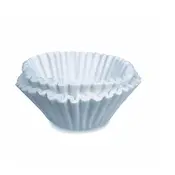
Filtering and chlorinating:
http://www.nationalterroralert.com/safewater/
In an emergency, if you do not have water that you know is safe, it’s possible to purify water for drinking. Start with the cleanest water you can find and treat with one of the following methods:
* You can filter water if you have a commercial or backpack filter that filters to 1 micron. These are available in sporting good stores and are recommended for use when back-packing. They are not recommended to clean large volumes of water. Filtering eliminates parasites such as giardia and cryptosporidium, but it may not eliminate all bacteria and viruses. Therefore, it’s recommended that 5-7 drops (1/8 teaspoon) of chlorine bleach* be added per gallon of filtered water (1/2 teaspoon for 5 gallons). Stir or shake the solution to mix it. Wait 30 minutes before using the water, or cap the containers and store them in a cool, dry place.
*Use liquid household bleach that contains 5.25 percent hypochlorite. Do not use bleaches with fresheners or scents as they may not be safe to consume. The above treatment methods use a two-step approach so less bleach is needed, yet giardia and cryptosporidium are destroyed through boiling or eliminated by filtering. Chlorine may not be effective against these parasites. Since adding too much chlorine to water can be harmful, it's important to be as accurate as possible when measuring.



 Water Filtration Systems have a set lifespan. After a while the filters just get worn out. You can use coffee filters to extend the life of your water filter.
Water Filtration Systems have a set lifespan. After a while the filters just get worn out. You can use coffee filters to extend the life of your water filter. 





